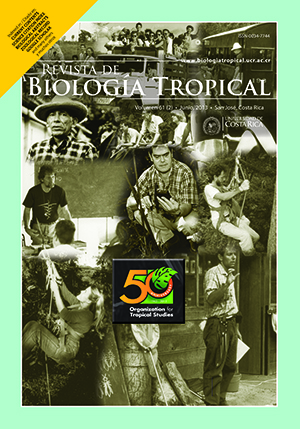Abstract
Mesoamerica is a biologically complex zone that expands from Southern Mexico to extreme Northern Colombia. The biogeographical patterns and relationships of the mammalian fauna associated to the Mesoamerican Tropical Evergreen Forest (MTEF) are poorly understood, in spite of the wide distribution of this kind of habitat in the region. We compiled a complete georeferenced database of mammalian species distributed in the MTEF of specimens from museum collections and scientific literature. This database was used to create potential distribution maps through the use of environmental niche models (ENMs) by using the Genetic Algorithm for Rule-Set Production (GARP) using 22 climatic and topographic layers. Each map was used as a representation of the geographic distribution of the species and all available maps were summed to obtain general patterns of species richness in the region. Also, the maps were used to construct a presence-absence matrix in a grid of squares of 0.5 degrees of side, that was analyzed in a Parsimony Analysis of Endemicity (PAE), which resulted in a hypothesis of the biogeographic scheme in the region. We compiled a total of 41 527 records of 233 species of mammals associated to the MTEF. The maximum concentration of species richness (104-138 species) is located in the areas around the Isthmus of Tehuantepec, Northeastern Chiapas-Western Guatemala, Western Honduras, Central Nicaragua to Northwestern Costa Rica and Western Panama. The proposed regionalization indicates that mammalian faunas associated to these forests are composed of two main groups that are divided by the Isthmus of Tehuantepec in Oaxaca in: a) a Northern group that includes Sierra Madre of Chiapas-Guatemala and Yucatan Peninsula; and b) an austral group, that contains the Pacific slope of Chiapas towards the South including Central America. Some individual phylogenetic studies of mammal species in the region support the relationships between the areas of endemism proposed, which suggest a common biogeographical history. In spite that Mesoamerica is considered one of the most important hotspots for biological conservation, the poor knowledge of the biogeographic patterns, the scarcity of protected areas, and the high rate of habitat transformation due to human activities, make prioritary the development of conservation strategies that include patterns of species richness, endemism, and mammalian associations.##plugins.facebook.comentarios##
Downloads
Download data is not yet available.






